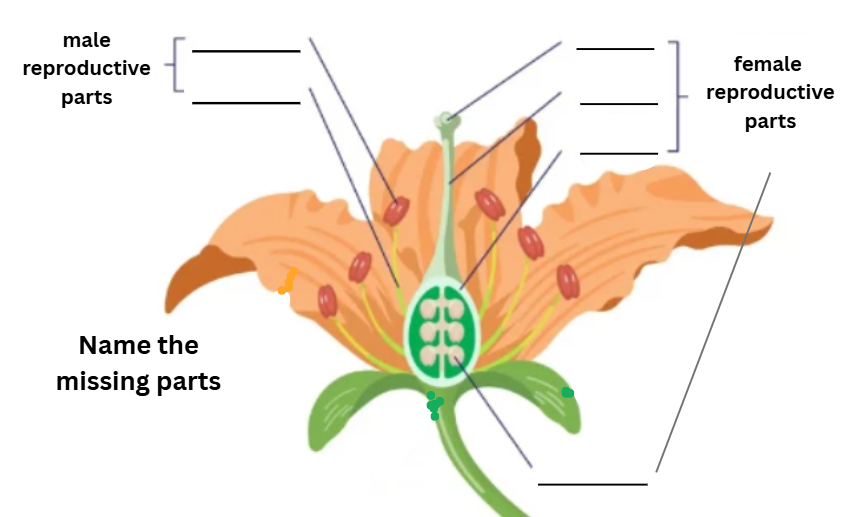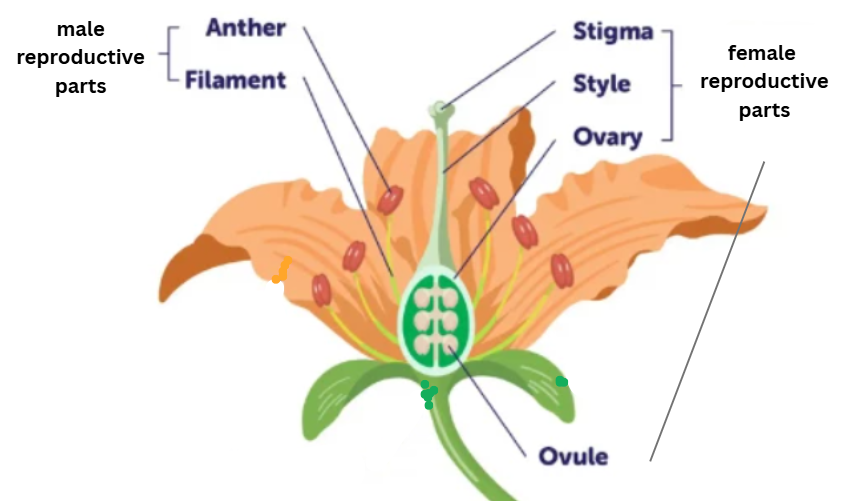Reproduction in plants
1/14
There's no tags or description
Looks like no tags are added yet.
Name | Mastery | Learn | Test | Matching | Spaced |
|---|
No study sessions yet.
15 Terms
State the function(s) of an Anther?
contains pollen sac that contains the pollen grains (male reproductive cells)
produces and releases pollen
State the function(s) of a Filament?
supports the anther
State the function(s) of a Stigma?
receives pollen grains
State the function(s) of a Style?
connects the stigma to the ovary
State the function(s) of an Ovary?
protects the ovule
becomes a fruit after fertilisation takes place.
State the function(s) of an Ovule?
contains the egg cell (female reproductive cell)
develops into a seed after fertilisation takes place
What are the conditions for a seed to grow into a seedling?
warmth
water
air
What is the cycle of reproduction in plants?
pollination → fertilisation → seed dispersal → germination
What is Pollination?
Pollination is the process whereby
pollen is transferred from the anther of a flower to the stigma of a flower of the same type.
What is Fertilisation?
Fertilisation is the process whereby
the male reproductive cells (pollen) fertilise the egg cell in the ovule, resulting in the development of a seed
Why do seeds need to be dispersed?
reduce competition for water, air, sunlight, space and mineral salts
ensures survivability and spread of their kind
What are the methods for seed/fruit dispersal?
wind
water
animal
splitting/ explosive action
fruits sometimes help in dispersal of seeds
What is Germination?
A seed develops into a new plant

Name the missing parts
